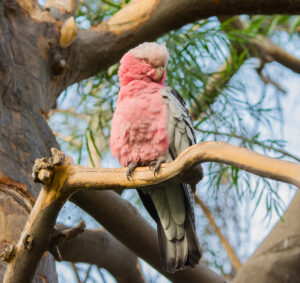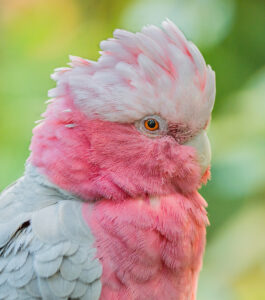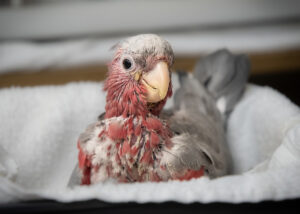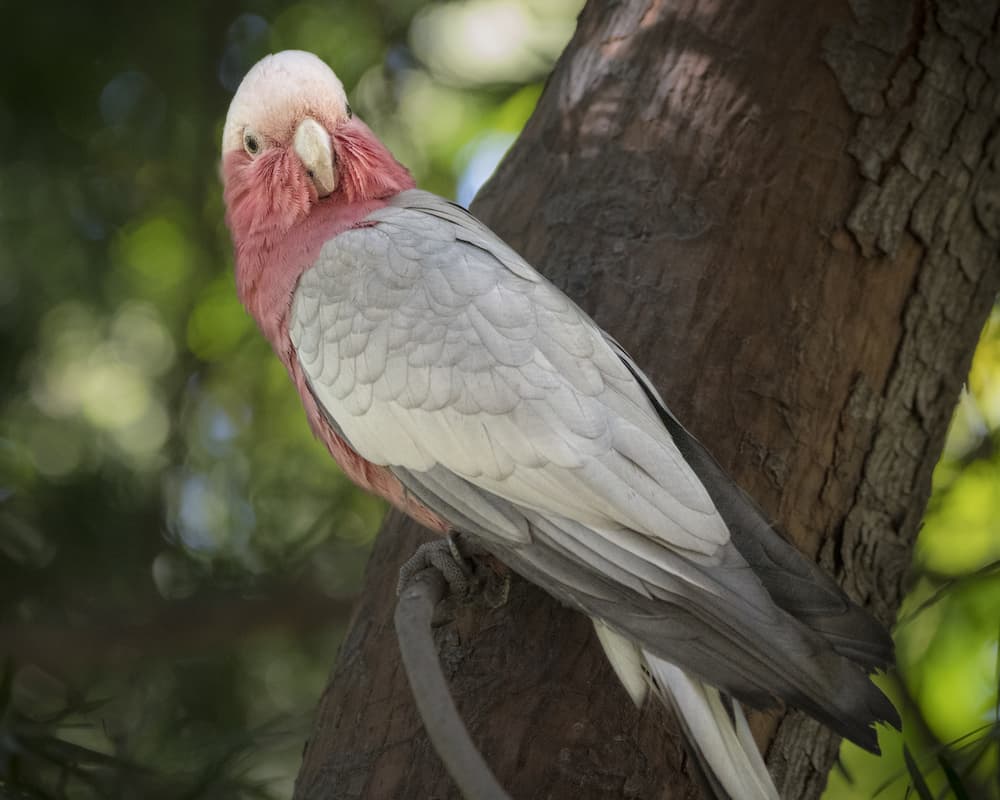About
Galah is an aboriginal name for the species but has now entered common Australian usage to imply “fool” or “idiot” derived from the galah’s playful behavior of hanging upside-down from wires and screeching at one another.
The galah flies in different ways – sometimes with deep wing beats in a direct path; other times flying erratically and performing noisy acrobatics across the sky, a sight to see when observing a flock of over a thousand birds.
Habitat
Known to inhabit the savannas, woodlands, and grasslands of interior Australia, the galah is one of the most widespread and abundant parrots of Australia, and, of late, have been increasing in numbers around the coastal and mountainous regions of the continent as well. Galahs have increasingly moved into urban districts of Australia, but are better known for residing in Eucalyptus trees and using its leaves to build their nests.
Diet
The galah’s typical diet includes seeds, roots, green shoots, leaf buds, and certain insects; however, certain populations of galah have been to attack both ripening crops and bagged grain from Australian wheat lands especially when in large flocks.
Physical Characteristics
Galahs are medium-sized, stocky birds measuring around 14 inches from beak to tail and weight anywhere between 300 to 400 grams. The beak of the galah is short and blunt designed for efficient cracking of seeds and nuts. Their plumage is pink and gray and the crest (a prominent feature on the head of some birds usually used for defense or communication between individuals) is short. Even though galahs have little sexual dimorphism, the males tend to have dark brown irises while the females tend to have dark red irises.



Location Within the Zoo
You may see the galah cockatoo in the Aviary. See Zoo Map.




